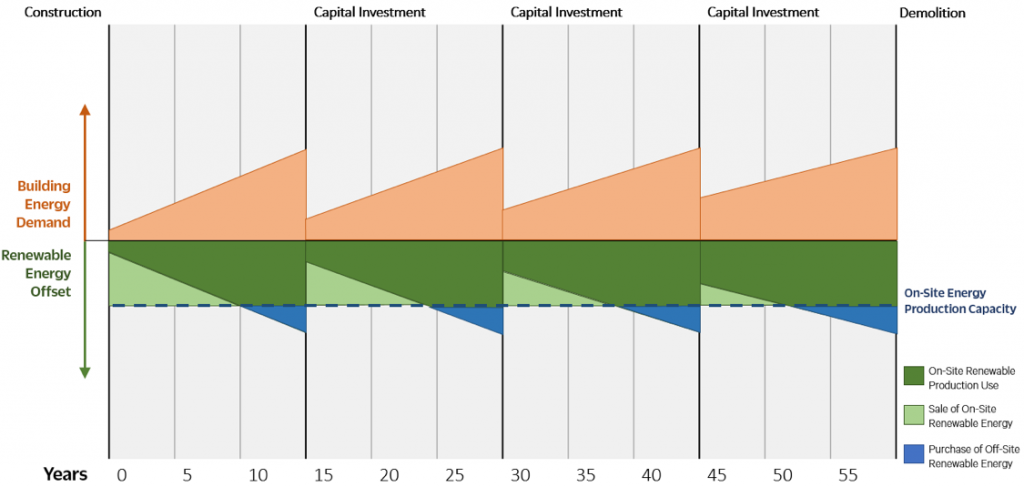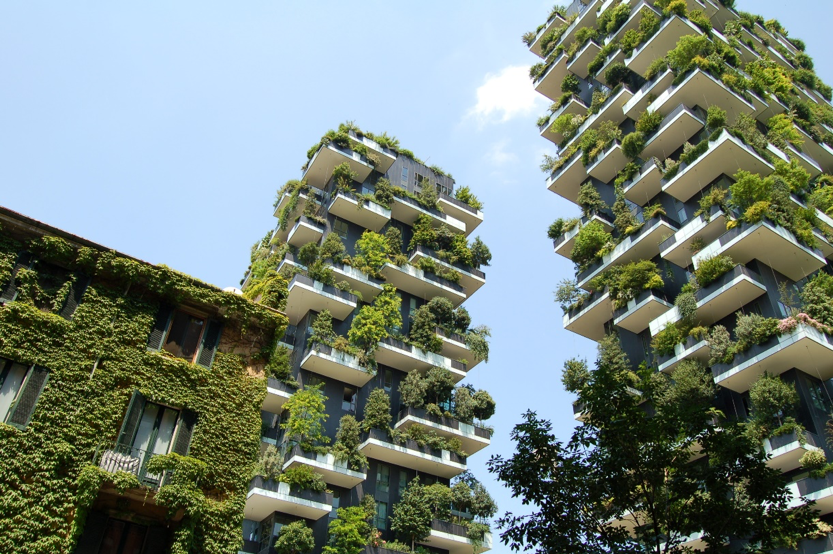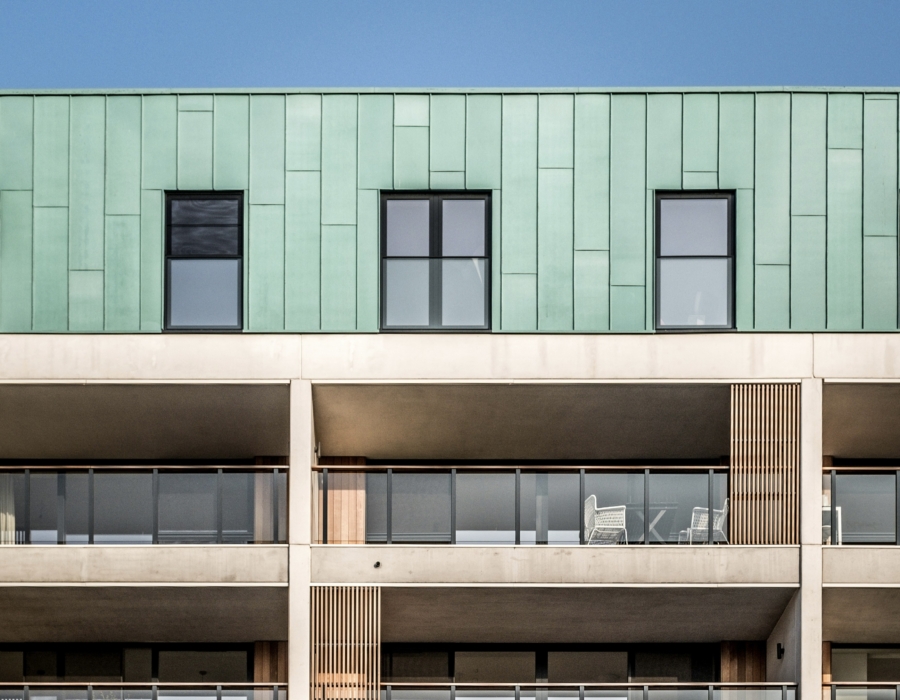Real estate professionals have been issued a challenge: zero out the net greenhouse gas emissions and energy usage of the built environment.
Who has issued this challenge?
- The planet: the atmospheric CO2 concentration reached 411.31 ppm [1] in May 2018, the highest the Earth has experienced for millions of years [2], and January 2016 was the warmest January on record (January 2018 was the 5th warmest)1. Real estate plays a significant role in this impact: building operations alone are estimated to account for 32% of global energy use and 13% of global greenhouse gas emissions. [3] The percentage of emissions attributed to buildings is only higher in more developed nations.
- The industry: Architecture 2030, an international non-profit organization, has issued the 2030 Challenge to the global architectural and building community for all new construction and major renovations to be Carbon-Neutral by the year 2030. In recent years, this target has been adopted by various firms, organizations, and governments worldwide [4].
- The market: High-performance building features in the commercial real estate sector have been shown to result in rental premiums and increases in tenant occupancy rates [5]. Even a conservative 2% occupancy rate increase can result in up to hundreds of thousands of dollars in additional annual income for building owners. Meanwhile, the U.S Energy Information Administration (EIA) forecasts that in the next 2 decades, the average price of commercial natural gas will grow by 28% and the average price of commercial grid electricity will grow by 4% [6].
What is the nature of this challenge?
If we are to “zero out” the climate impacts of the real estate sector, it’s helpful to first establish what “zeroing out” means for a building. The exact definitions of “Net Zero Energy Building” or “Carbon Neutral Building” are still debated in the industry, despite being widely used terms. Although there is a large portion of greenhouse gas (GHG) emissions attributed to building materials and the initial construction process, the more common definitions of net-neutral buildings concern the emissions produced by building’s operation over its lifetime.
For the purposes of setting an impactful goal, consider the more stringent definitions set by The International Living Future Institute, which awards Zero Carbon and Zero Energy certification to buildings:
- Net Zero Energy Building: A building which has no on-site fuel usage and generates 100% of its annual site energy needs via on-site renewable energy.
- Net Carbon Neutral Building: A building which has no on-site fuel usage [7] and off-sets 100% of its annual emissions-producing energy use with on or off-site renewable energy production.
The key to achieving net zero is to first reduce the amount of energy a building needs to run before even looking to renewables to meet those needs. This low energy operation should then be maintained from its construction to its demolition, to truly minimize its environmental impact. To understand why both practices are critical in achieving a net-neutral building, consider a building’s energy demand throughout its entire lifespan (which for an average modern building is about 60 years [8] ), as shown in the example below.
Figure 1 illustrates that creating a low energy intensity building is only half the battle. Even the most efficient buildings will slowly require more and more energy over time as their envelope degrades and the mechanical equipment wears down. For building energy demand to be kept low over the course of decades, reinvestments via upgrades and retrofits are required.

In the hypothetical example above, the amount of on-site energy generation capacity initially exceeds the energy needs of the building, so the site is able to sell the “excess” generation back to the market. However, as the building’s power demands grow with its age, after 10 years it can no longer generate enough renewable energy on-site and must purchase off-site emission-free energy to at least maintain carbon neutrality. Then finally after another 5 years, the amount of off-site energy that must be purchased annually becomes financially unsustainable and the building undergoes significant upgrades to lower its energy demand to manageable levels. Thus, after this capital investment at the 15-year mark, the building regains its status as both a net zero energy and carbon neutral building.
A cycle of reinvestment every 15 years is a reasonable average used strictly for the illustrative example above, and the amount of time before capital upgrades are financially feasible and environmentally impactful will vary from property to property. Although each building will experience this cycle differently, the underlying balancing act between energy consumption and renewable energy generation is the nature of maintaining any truly net-neutral building.
The frequency and magnitude of capital investments required depend on a building’s practical limits for renewable energy offsets. For on-site generation, there is often a physical limit on the renewable production capacity (represented by the blue dotted line in Fig 1.). Many sites have limited space which may be allocated to solar panels or wind turbines, which naturally limits the amount of renewable energy that can be produced. Another common limitation is adjacent buildings or structures that block sunlight or wind from getting to the site. Urban buildings often have some combination of these two physical restrictions for on-site renewables, thus making the initial lowering of energy demand even more critical in achieving energy and carbon neutrality.
For off-site purchase of renewable power, the practical limits for offsets become financial and geographical. The amount of regional renewable energy available for purchase depends greatly on the development density, geography, electrical infrastructure and climate of a site’s surrounding area. If the energy needs of a site surpass both the capacity for renewable generation on-site and the green power available in their regional energy market, the building must then purchase off-site renewables from elsewhere to remain net carbon-neutral. However, is It often the case that the cost for renewable energy generated outside of a site’s local region is greater than the wholesale cost of local GHG-emitting grid power [9].
Therefore, the building can reach a point where a retrofit to reduce its energy load and remove the need to purchase off-site renewables is more cost-effective in the long-term than continuing to tap into distant green power markets. This is the exact situation that is illustrated at the 15, 30, and 45-year marks in Figure 1 above.
How can this challenge be met?
Decreasing the energy load of a building is the most critical component in reaching net zero energy and carbon neutrality. Thus, any answer to the “how?” of achieving a net-neutral building involves implementing high performance and passive building design. This is the case both for a new construction project and when considering major renovations and retrofits for existing buildings.
New Construction
A myriad of energy-efficient technologies and proven design techniques are currently at the industry’s disposal. However, there is one core principle that is applicable to any new construction project aspiring for energy and carbon neutrality: “Model Twice, Build Once”. Just like the carpenter who makes sure not to waste material by carefully measuring before cutting, project teams can measure the energy performance of their design before it is built to ensure the planet’s resources are conserved.
Much of the real estate industry is familiar with building simulation from the perspective of compliance for energy codes and green certifications, but its true potential is as a design tool. The collection of strategies that will lead to a low site energy intensity are specific to each building’s location, climate, and geometry. Modern tools and software allow for the energy and operational cost implications of all these factors to be investigated in dozens of virtual scenarios, to optimize the building design before any construction begins.
Existing Buildings
Newly erected structures cannot be the sole focus of net-zero efforts if the real estate industry is to make a significant environmental impact. Especially considering that over half of the buildings in established markets that will be in operation by 2050 have already been built [10]. Decreasing the energy needs and GHG emissions of a building can seem more daunting for an existing property than approaching the problem with a clean slate. However, the aging building systems that are often the obstacle to decreasing energy usage also provide existing buildings with their largest advantage over new construction: data.
Every existing building has access to their personal energy demands and consumption. Whether it is through utility bills, BAS/BMS equipment or manually reading meters, the exact electricity and fuel resources required to run a property can be collected. This real-world energy data is more informative than estimates and is crucial in understanding which components of an existing building contribute most to its energy demands. In combination with an energy audit or technical analysis, this usage data can be used to make targeted capital upgrades to a building that will maximize energy reductions achieved by the reinvestment.
The Rocky Mountain Institute (RMI), an independent nonprofit dedicated to accelerating low-carbon emitting development, offers a simple framework that can help existing building owners and project teams approach impactful retrofits. RMI recommends that teams first consider the lowest energy usage their building could achieve if there were no economic or logistical constraints, i.e. the “Technical Potential” [11] of the property. By working backward from the upgrades technically possible, to the upgrades that are feasible, allows for a faster and clearer definition of the obstacles on the building’s path to net-zero. If the constraints on a building’s potential can be fully understood, they can be overcome more effectively.
Getting Started
Developers and building professionals don’t have to tackle this challenge alone. Many municipalities have already recognized low site energy as a crucial step in zeroing out the emissions of our built environment, and have written intermediate goals into law that require buildings to go “nearly” zero-energy. One of the largest leaders in this effort has been the European Union, which passed a directive in 2010 requiring all EU member countries to ensure their federal buildings are nearly zero-energy by 2018 and all their new construction projects are nearly zero-energy by 2020.
If investigated and implemented early on in a project, many of the measures needed to achieve net-neutral building operation do not have a significant cost increase over the “standard” industry practices. However, when financing is a major obstacle, many states and federal governments offer monetary incentives for the construction of high-performance energy buildings and energy-efficient retrofits. A link to such programs currently offered in the U.S can be found in the Resources section below.
The approach that will drive the deepest energy and GHG emission savings, while remaining financially feasible, is different for every building. Learning from what others have already accomplished is a great way to begin a building’s journey to becoming net-neutral.
In addition to all the references throughout this article, in the resources section below are links to a database of best practices and a set of prescriptive requirements for achieving Net-Zero buildings that can inform investors, design teams, and municipalities alike. Also linked below are two case studies of deep energy retrofits which highlight the benefits of capital investment in aging buildings.
This article is written by George Miroshnikov, from CodeGreen Solutions Inc.
Resources and Tools
- https://www.2030palette.org/building/
A robust database of resources, best practices and rules of thumb that can be used by project teams to achieve a low-carbon and low-energy building design. - https://zero-code.org/zero-code/
A combination energy standard newly released by Architecture 2030 which provides prescriptive and performance requirements that projects can follow to achieve a zero-net-carbon building design. - https://database.aceee.org/state/financial-incentives
On-going catalog of some of the financial incentives offered by U.S. states for the development of high-performance and net-zero energy buildings. - https://rmi.org/wp-content/uploads/2017/04/Buildings_Retrofit_EmpireStateBuilding_CaseStudy_2009.pdf
A case study of the financial considerations, innovative approach and deep energy savings achieved by a series of substantial building upgrades at the Empire State Building in New York City. - https://www.hpbmagazine.org/attachments/article/11795/14Su-Wayne-N-Aspinall-Federal-Building-and-US-Courthouse-Grand-Junction-CO.pdf
A case study of the design approach, results and lessons learned from a significant energy efficient retrofit of a decades-old historical building in Colorado.
[1] https://www.co2.earth/
[2] https://www.climatecentral.org/news/climate-change-unseen-50-million-years-21312
[3] https://www.ipcc.ch/report/ar5/wg3/
[4] https://architecture2030.org/2030_challenges/adopters/
[5] https://www.imt.org/wp-content/uploads/2018/02/LenderGuide_FINAL.pdf
[6] https://www.eia.gov/analysis/projection-data.php#annualproj
[7] For the purposes of achieving a Zero Carbon certification, existing buildings can use fuels on-site and still be considered “Zero Carbon” by IFLI if 100% of the existing building’s energy use is offset via renewables.
[8] Normandin, Kyle C., and Susan Macdonald. 2013. A Colloquium to Advance the Practice of Conserving Modern Heritage: March 6–7, 2013: Meeting Report. Los Angeles: The Getty Conservation Institute. https://hdl.handle.net/10020/gci_pubs/colloquium_report
[9] https://secondnature.org/wp-content/uploads/InsightsForAction_Nov2017-1.pdf
[10] https://www.researchgate.net/profile/Chris_Marnay/publication/237437097_A_Buildings_Module_for_the_Stochastic_Energy_Deployment_System/links/0c96052ef2cf52f4f1000000/A-Buildings-Module-for-the-Stochastic-Energy-Deployment-System.pdf
[11] https://www.rmi.org/our-work/buildings/deep-retrofit-tools-resources/deep-retrofit-case-studies/



